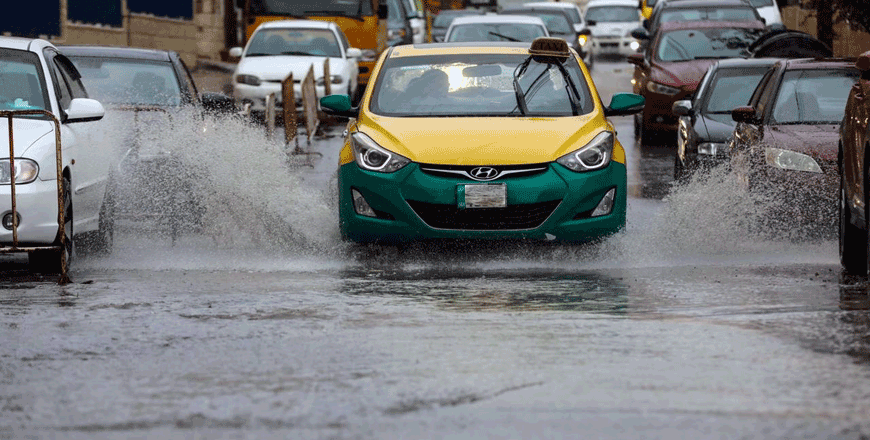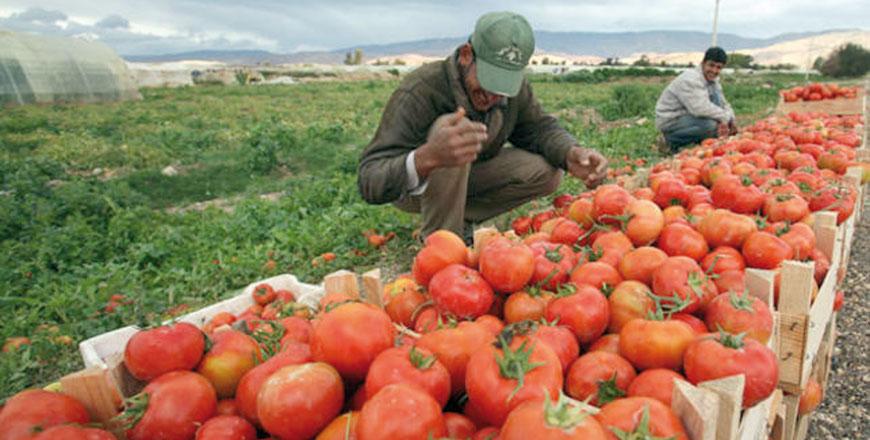You are here
Farmers rejoice as rain soaks Kingdom
By Hana Namrouqa - Jan 06,2018 - Last updated at Jan 06,2018

The rain, which started on early Friday and lasted until early Saturday, 'has saved this year's agricultural season from a looming drought', officials said (Photo by Osama Aqarbeh)
AMMAN — Over 20 million cubic metres (mcm) of water entered the country’s 12 main dams after the rain, which lasted between Friday and Saturday, according to official figures released on Saturday.
The rain, which started on early Friday and lasted until early Saturday, “has saved this year’s agricultural season from a looming drought”, officials said.
Several streets and houses were flooded on Friday, following the heavy precipitations which also caused landslides in different parts of the country, according to authorities, which did not report any weather-related fatalities.
A depression accompanied by a wet and cold air mass started affecting the country Thursday evening, bringing strong winds that raised dust and reduced visibility in desert areas as well as heavy rain across the Kingdom, according to the Jordan Meteorological Department (JMD).
Wadi Al Sir received the highest amount of rain, according to figures from the Ministry of Water and Irrigation, which indicated that the western Amman district received 98.2 millimetres (mm) of rain in 24 hours (between Friday and Saturday).
Meanwhile, Aqaba, some 330 kilometres south of Amman, received the lowest amount of rain, registering only 2.5mm, according to the ministry’s figures.
In a statement e-mailed to The Jordan Times, Minister of Water and Irrigation Hazem El Nasser said that the rain has channeled 20 mcm into the country’s 12 major dams.
“The dams now hold 82.9 mcm or 24.9 per cent of their total capacity of 333 mcm,” El Naser said.
Despite the excellent amounts of rain received during the depression, water levels at the dams are far below what they reached during the same period last year.
Ministry’s figures indicate that during this time last year, the dams held 141.78 mcm or 43.85 per cent of their total capacity.
“Friday’s rain raised the overall rain that the country received since the start of the wet season to 2.3 billion cubic metres (bcm) of water, which constitutes 29.1 per cent of Jordan’s long-term annual average of rainfall of 8 bcm,” El Nasser said in the statement.
During this time last year, the country received 45.6 per cent of its long-term annual average of rainfall, according to the ministry.
Meanwhile, ministry’s spokesperson, Omar Salameh, said that some 70 per cent of the total amount of rainwater that entered the country’s dams went mainly into three dams: King Talal, Mujib and the under-expansion Waleh.
“The dams’ storage is expected to slightly increase during the next two days as floods are still entering the dams,” Salameh told The Jordan Times.
The official said that the rain has “revived the hopes of farmers and cattle breeders” of a productive agricultural season, especially as rain has been meager this winter.
President of the Jordan Valley Farmers Union Adnan Khaddam said that farmers are “rejoiced” by Friday’s rain, expressing hope that the country would witness similar depressions which will bring sufficient rain.
“We are very happy that the country has finally received good rainfall amounts this winter. This has a very positive impact on crops in the valley and it will reduce salinity levels in water stored at the dams,” Khaddam told The Jordan Times.
The farmers’ representative said that, when the Jordan Valley receives adequate rain, farmers use less water for irrigation and also use less pesticides as rain and cold weather limit the spread of pests.
“The rain is very good for citrus trees as it washes away dirt and strengthens the colour of the fruits. It is also very good for leafy vegetables such as lettuce, cabbage, parsley and mint among other crops, which are the main cultivations in the Jordan Valley currently,” he noted.
Khaddam said that the Jordan Valley received excellent amounts of rain, especially in its northern part.
Meanwhile, the Greater Amman Municipality on Saturday said in a statement that its teams responded to 200 weather-related emergencies on Friday, 90 per cent of which were sewage flooding and rising water levels in basements of buildings which do not have pumps.
Related Articles
AMMAN — This season’s rainfall has surpassed the amount recorded over the same period of last year, as Jordan’s dams have received some six
AMMAN — Water officials and farmers on Saturday expressed relief over the weekend’s unusual downpour that filled an additional 15 million cu
AMMAN — Rain over the weekend channelled over 25 million cubic metres (mcm) of water into the country’s 14 major dams, an official at the Mi















